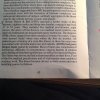Forbin
Senior Member (Voting Rights)
I'm not sure that I've seen this linked elsewhere, but the entire November 1978 issue of the Post Graduate Medical Journal was devoted to ME and is online. It includes articles by Melvin Ramsay and J. Gordon Parish among others. I thought it might be of historical interest to some.
Here, ME is called "Epidemic Neuromyasthenia," which should not be confused with "neurasthenia."
Click on the article name in the table of contents, and then click on the PDF symbol on the subsequent abstract page to read the full article.
http://pmj.bmj.com/content/54/637
From Dr. Ramsay's article:

Here, ME is called "Epidemic Neuromyasthenia," which should not be confused with "neurasthenia."
Click on the article name in the table of contents, and then click on the PDF symbol on the subsequent abstract page to read the full article.
http://pmj.bmj.com/content/54/637
From Dr. Ramsay's article:
Muscular fatigability
Abnormal muscular fatigability is the dominant clinical feature of the disease. It has been suggested by Dr David Wilkie that this phenomenon might result from damage to mitochondria. Parish (1974) also considered that 'there is a prolonged metabolic disorder in many patients which may be affecting cellular energy systems and antibody production'.
Dr Wilkie advocated a series of biochemical investigations that might provide a useful source of information and Dr Alan Rundle of St Lawrence's Hospital, Caterham, has kindly examined blood from seven patients with unequivocal 'epidemic neuromyasthenia'. He has estimated the serum levels in units per litre of creatinine phosphokinase, lactic dehydrogenase, glutamic oxalo-acetic transaminase, glutamic pyruvate transaminase and y-glutamyl transpeptidase.
All seven patients produced pathologically high levels of lactic dehydrogenase and glutamic oxaloacetic transaminase. The full details of these studies will be reported later as they clearly indicate metabolic disturbance.

Last edited:

